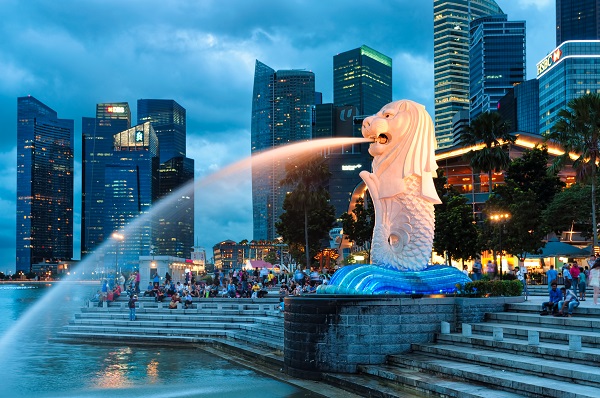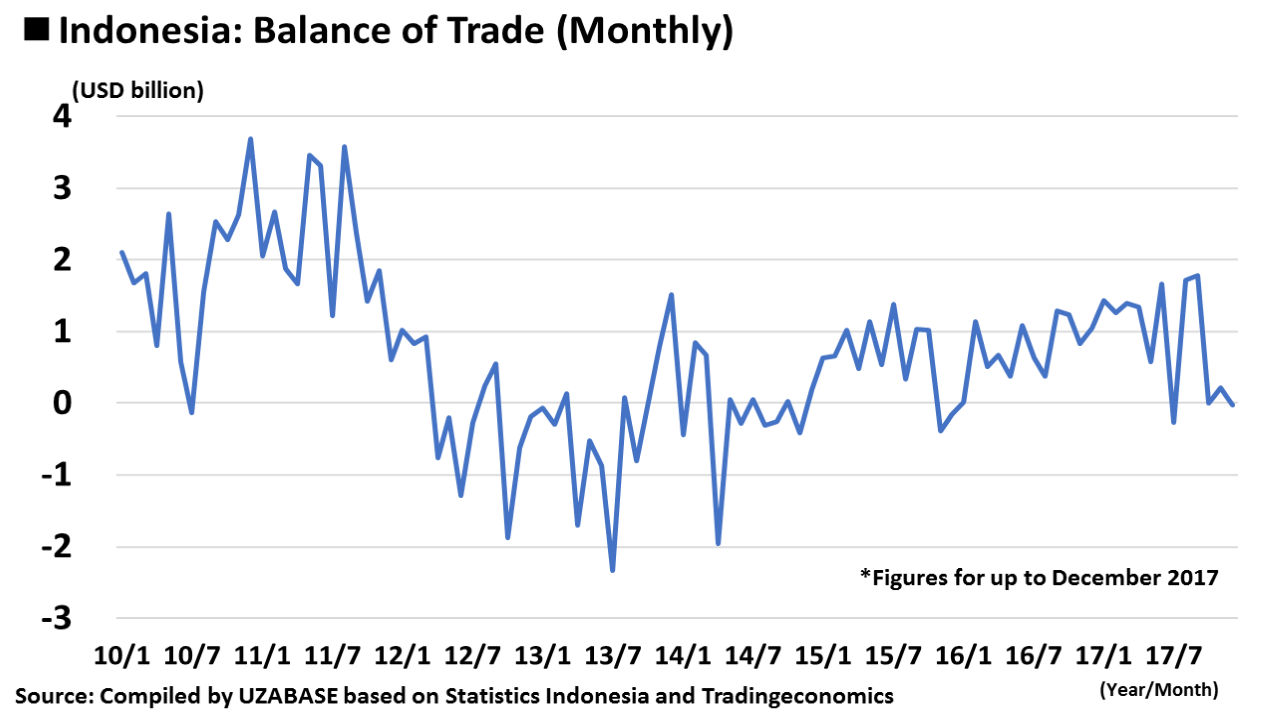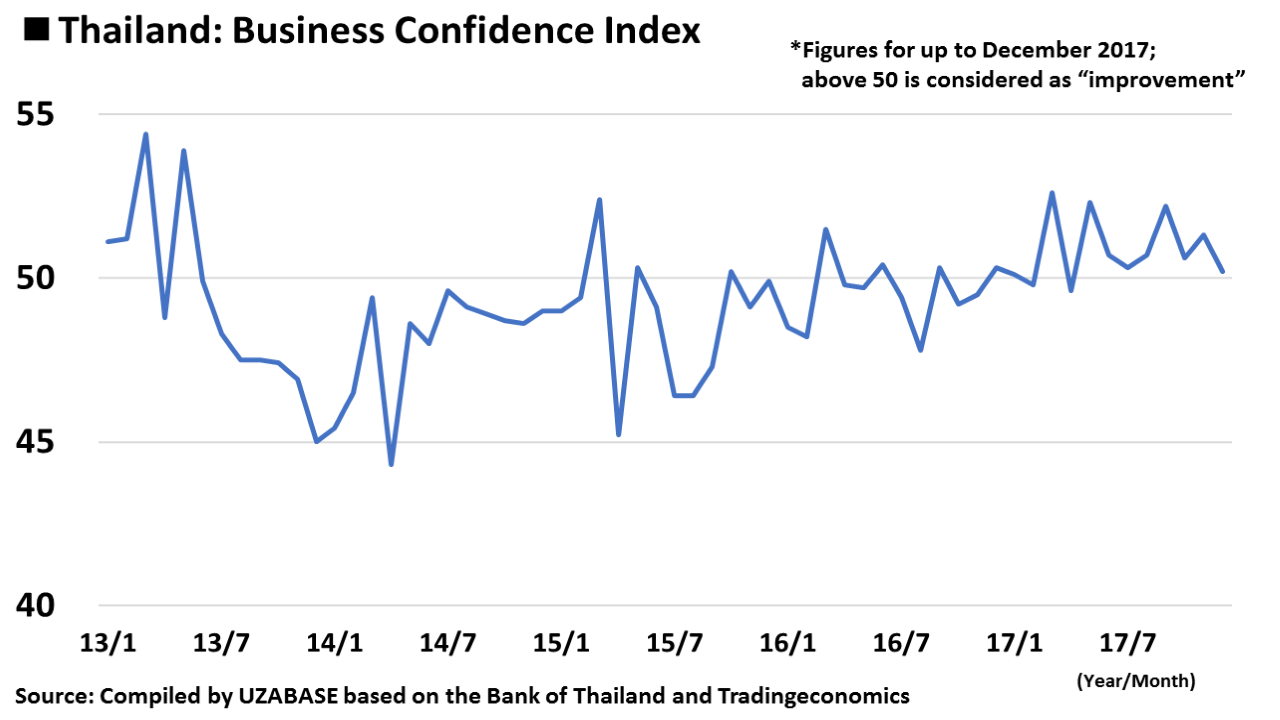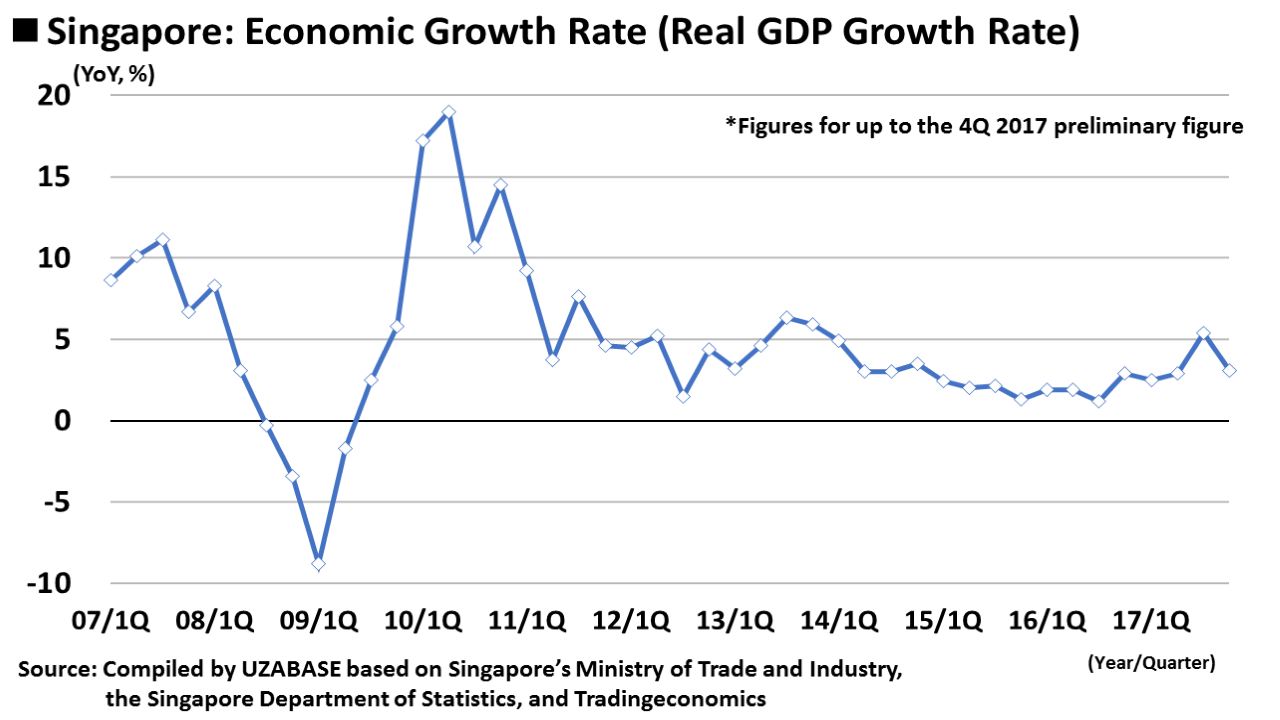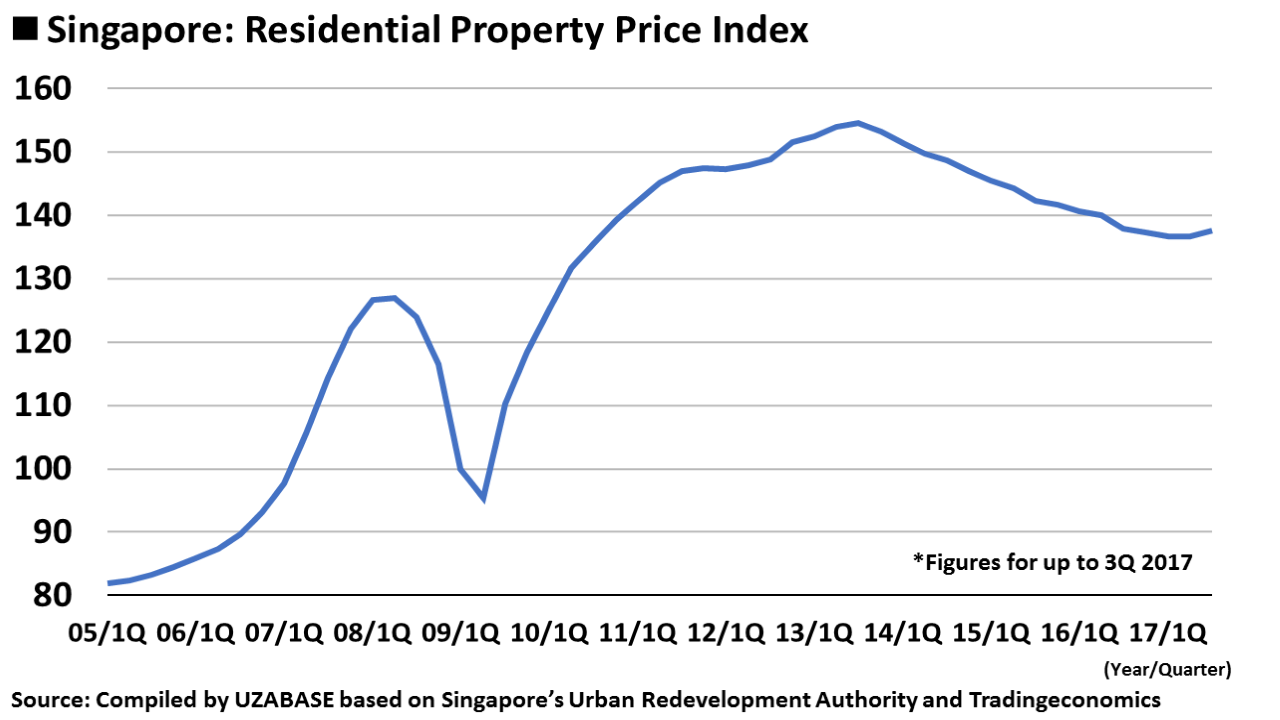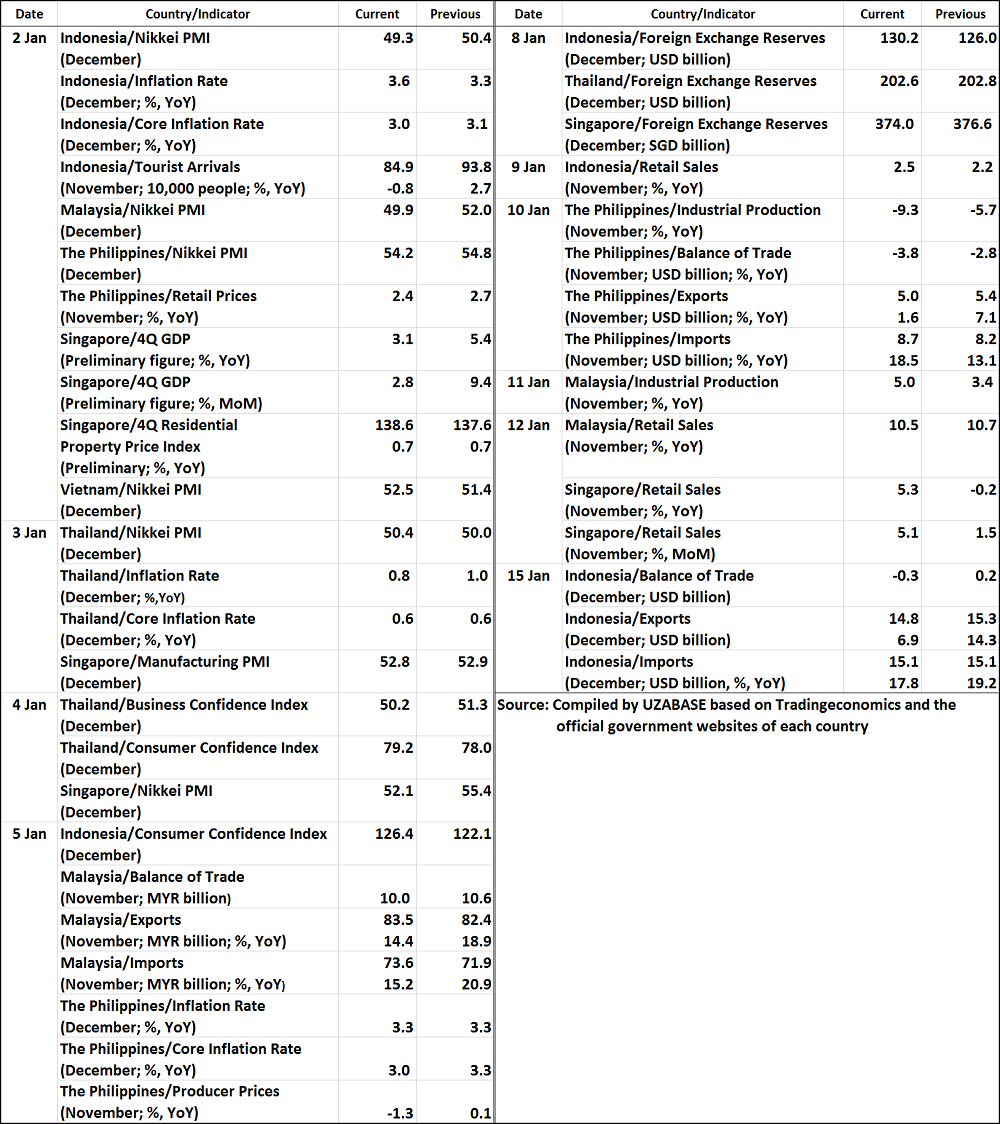ASEAN Macroeconomic Trends: Singapore’s Growth Rate Exceeds 3% for the First Time in Three Years; Thailand’s Economic Recovery Seen in Household Sector
|
Indonesia: Experienced Second Trade Deficit for 2017 |
|
Indonesia’s balance of trade for December 2017 was announced at a deficit of USD 300 million, though the balance for the entire year was in the black at USD 11 billion. Compared to 2016, in which there were no deficits on a monthly basis, the country witnessed two months of deficits in 2017, revealing slight fluctuations by month that year. |
|
The country recorded a particularly large surplus over 2010–11. At that time, the price of crude oil was high at around USD 80–110 per barrel, which boosted Indonesia’s exports and led to positive figures for its trade balance. Crude oil prices bottomed out in July 2017, and have been on an uptrend since then, recovering to a level of USD 60 per barrel as of late. |
|
While Indonesia has been experiencing a gradual increase in exports for products from the manufacturing sector, such as automobiles, its primary exports are still natural resources like crude oil and natural gas. Going forward, crude oil prices are expected to exhibit a nearly flattened to gradual uptrend in the long term, suggesting that there is a low possibility that Indonesia will continue to experience trade deficits. |
|
|
|
Thailand: Clear Path to Economic Recovery Even in the Household Sector |
|
Thailand’s Business Confidence Index (BCI) for December 2017 was announced at 50.2, and despite falling from the 51.3 registered in November, it remained above the “improvement” level of 50 for eight consecutive months from May. Also in December 2017, the country’s Consumer Confidence Index (CCI) was recorded at 79.2, marking continuous improvement for four consecutive months. While this figure is still well below the “optimistic” level of 100, it is closing in on the 80 range, which was the highest range reached in the past five years. |
|
In 2017, Thailand’s indicators related to the supply side, such as the BCI, made headway towards improvement at an early stage, while the recovery of indicators from the demand side, such as the CCI, fell behind. Based on the recent trends in the country’s macroeconomic indicators, the demand side, particularly the household sector, appears to be on a continuous recovery trend. |
|
|
|
|
|
Malaysia: Former Prime Minister Mahathir Mohamad Announces Intention to Run for General Election |
|
Malaysia’s retail sales were up by 10.5% YoY in November 2017, reflecting favourable economic conditions and maintaining a high growth rate. |
|
|
|
On 10 January, Malaysia Airports Holdings Berhad (MAHB) announced an increase in the number of travellers using domestic airports (for domestic and international flights) for 2017, stating that the number reached approximately 96.54 million people. MAHB also forecast that the number will exceed 100 million in 2018. In addition to an increase in demand from business and leisure travellers due to high domestic economic growth, Malaysia is also the birthplace of one of the world’s leading low-cost carriers (LCCs), AirAsia, whose hub is the Kuala Lumpur International Airport 2, suggesting that there is an increasing number of users from both home and abroad. |
|
Entering January, the rainy season in Malaysia continues, with damage from flooding seen in parts of the country. While there are concerns over the effect of the rainfall on the cultivation of crops, the effects have not impacted the country’s macroeconomic condition nor its manufacturing sector at this time. |
|
In the political arena, it was reported at the end of 2017 that the former Prime Minister Mahathir Mohamad revealed his intention to run in Malaysia’s general election again. In 2016, Mahathir withdrew from the country’s largest ruling political party, the United Malays National Organisation (UMNO), and formed the Malaysian United Indigenous Party with former Deputy Prime Minister Muhyiddin Yassin (position changed by current Prime Minister Najib Razak). Mahathir is currently the Chairman of the Pakatan Harapan opposition alliance, and although there is a possibility that the opposition party will select him as a candidate for the general election, there also appear to be movements amongst influential people in other parties towards opposing him. |
|
The Philippines: Trade Deficit Continues to Increase Amidst a Backdrop of Favourable Economic Conditions |
|
The Philippines recorded its largest deficit range to date in November 2017, standing at USD 3.8 billion, due to an increase in demand during the Christmas season and a resultant rise in imports. |
|
The country’s import value has continued to rise in recent years, reflecting an increase in household spending together with favourable economic conditions, as well as an increase in imports for machinery and equipment in tandem with a rise in direct foreign investment. Such an occurrence is typical for emerging countries that are undergoing high-speed growth, and when the domestic production of consumer goods, machinery, and equipment gradually becomes feasible, imports will start to decline. |
|
Singapore: Growth Rate for 4Q 2017 Favourable at 3.1% |
|
On 2 January, Singapore’s economic growth rate (real GDP) for 4Q 2017 was announced at 3.1% YoY. During 4Q, the country’s financial, insurance, and service sectors experienced favourable conditions. Furthermore, the 3Q real GDP growth rate was revised upwards to 5.4% YoY from the previous 5.2%. |
|
The overall growth rate for 2017 was 3.5%, which exceeded the government’s initial target of 1.0–3.0%, and reached the 3% level for the first time since 2014. |
|
|
|
On a quarterly comparison, Singapore’s economic growth rate for 4Q was up by 2.8% from the previous quarter, and the rate for 3Q was revised up to 9.4% from the 8.8% that was announced on 23 November. |
|
Against a backdrop of global economic recovery and an increase in IT demand throughout 2017, Singapore’s manufacturing sector, centred on precision equipment, was the driver for the country’s favourable economy that year. In the latter half of the year, its financial and service sectors also appear to have made contributions. |
|
The preliminary figure for Singapore’s 4Q 2017 Residential Property Price Index was announced at 138.6, which was up by 0.7% YoY. The figure had continued to decline after peaking at 154.6 in 3Q 2013, and after hitting 136.6, the lowest figure to date, in 2Q 2017, it continued to rise for two consecutive terms. Although the actual supply and demand relationship must be considered when examining this trend, there is an increasing likelihood that Singapore’s Residential Property Price Index will continue on a gradual uptrend. |
|
|
|
Key Focus in the Next Report |
|
The next report will cover 16–31 January, during which time, the 4Q 2017 GDP statistics for the Philippines will be announced, and Indonesia and Malaysia will hold their monetary policy meetings. Other important indicators that deserve attention over this period are the value of Indonesia’s direct foreign investment (4Q 2017), Thailand’s Coincident Index (December 2017) and retail sales (November 2017), and Singapore’s Residential Property Price Index (4Q 2017). |
|
|
